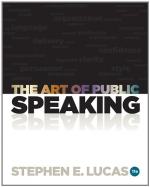Scenes { Still
" " { Including action
Situations { Preceding change
" " { During change
" " { After change
Actions { Mental
" " { Physical
Persons { Internal
" " { External
Some of the foregoing processes will overlap, in certain instances, and all are more likely to be found in combination than singly.
When description is intended solely to give accurate information—as to delineate the appearance, not the technical construction, of the latest Zeppelin airship—it is called “scientific description,” and is akin to exposition. When it is intended to present a free picture for the purpose of making a vivid impression, it is called “artistic description.” With both of these the public speaker has to deal, but more frequently with the latter form. Rhetoricians make still further distinctions.
Methods of Description
In public speaking, description should be mainly by suggestion, not only because suggestive description is so much more compact and time-saving but because it is so vivid. Suggestive expressions connote more than they literally say—they suggest ideas and pictures to the mind of the hearer which supplement the direct words of the speaker. When Dickens, in his “Christmas Carol,” says: “In came Mrs. Fezziwig, one vast substantial smile,” our minds complete the picture so deftly begun—a much more effective process than that of a minutely detailed description because it leaves a unified, vivid impression, and that is what we need. Here is a present-day bit of suggestion: “General Trinkle was a gnarly oak of a man—rough, solid, and safe; you always knew where to find him.” Dickens presents Miss Peecher as: “A little pin-cushion, a little housewife, a little book, a little work-box, a little set of tables and weights and measures, and a little woman all in one.” In his “Knickerbocker’s” “History of New York,” Irving portrays Wouter van Twiller as “a robustious beer-barrel, standing on skids.”
Whatever forms of description you neglect, be sure to master the art of suggestion.
Description may be by simple hint. Lowell notes a happy instance of this sort of picturing by intimation when he says of Chaucer: “Sometimes he describes amply by the merest hint, as where the Friar, before setting himself down, drives away the cat. We know without need of more words that he has chosen the snuggest corner.”
Description may depict a thing by its effects. “When the spectator’s eye is dazzled, and he shades it,” says Mozley in his “Essays,” “we form the idea of a splendid object; when his face turns pale, of a horrible one; from his quick wonder and admiration we form the idea of great beauty; from his silent awe, of great majesty.”




